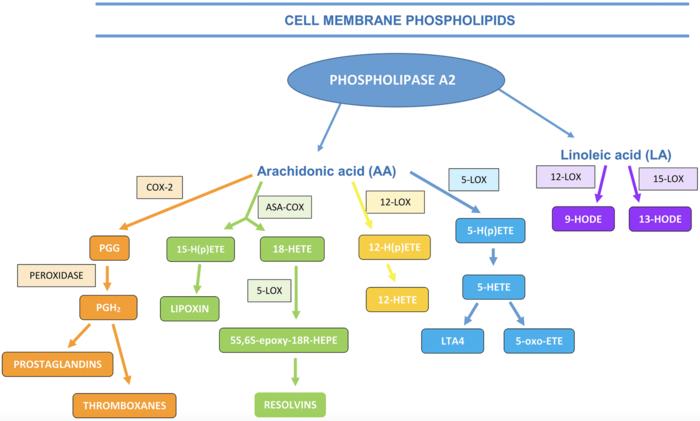A recent study published in the journal Aging has delved into the intricate relationship between oxidative stress markers and benign prostatic hyperplasia (BPH), particularly in the context of metabolic syndrome. The research highlights how inflammatory mediators relate to metabolic health, revealing a multifaceted view of prostate health concerns that plague aging men. This groundbreaking inquiry led by Weronika Ratajczak and Olimpia Sipak focused on how key metabolites derived from arachidonic and linoleic acids might play pivotal roles in the pathophysiology of BPH.
The study addresses a significant concern, as BPH is a prevalent condition affecting millions of men globally. Characterized by prostate enlargement and associated urinary complications, BPH’s increasing incidence correlates with advancing age, but nuanced causes remain to be fully elucidated. What’s emerging from the layers of clinical data suggests a tangible connection between chronic inflammation and BPH, particularly within populations facing metabolic adversity such as obesity and insulin resistance, hallmark features of metabolic syndrome.
In their methodology, the researchers meticulously analyzed blood samples from a cohort of 219 men, distinguishing between those diagnosed with BPH and a control group without the condition. By measuring various inflammatory biomarkers and oxidative stress indicators, Ratajczak and her team amassed a wealth of data that painted a compelling picture of the inflammatory landscape associated with BPH. Their findings delineated a clear disparity between the two groups, showcasing marked elevations in pro-inflammatory signaling molecules among those with BPH.
The study’s results were striking; men diagnosed with BPH exhibited significantly heightened levels of key inflammatory markers, notably 12S-HETE and 5-HETE. In contrast, levels of protective anti-inflammatory mediators such as lipoxin A4 were considerably diminished in the BPH group. This imbalance underscores a potential biological mechanism whereby chronic inflammation exacerbates or possibly catalyzes the progression of prostate enlargement. Particularly for men grappling with metabolic syndrome, the implication is that the dual burden of inflammatory and metabolic derangements could culminate in a heightened risk for BPH.
As inflammation has been increasingly linked to other serious health issues, including prostate cancer, this study opens the door for further exploration into the intersections of metabolic health, prostate disease, and inflammation. The potential implications are vast, suggesting that addressing metabolic dysfunction and inflammation may not only mitigate the risk of BPH but could also play a role in the management of its symptoms.
The researchers advocate for a paradigm shift in how we assess risks associated with prostate health. Furthermore, it highlights the necessity for healthcare providers to consider comprehensive health evaluations encompassing metabolic health markers when assessing a patient’s risk for BPH. This study emphasizes not solely understanding the disease in isolation but considering how concurrent conditions can influence its course and severity.
Compellingly, while the study provides significant insights, it simultaneously underlines the limitations present in the current understanding of BPH. The precise mechanisms that link oxidative stress and lipid-derived inflammatory markers to the disease’s progression warrant additional scrutiny. There is a pressing need to unravel the complexity inherent in the interplay of these biological systems, where future studies might explore genetic, environmental, and behavioral factors that contribute to this intricate pathology.
As the aging population continues to expand, the relevance of the BPH study is magnified. It not only contributes foundational knowledge to the field of urology but serves to remind us of the broad ramifications of chronic inflammation and metabolic syndrome as risks to men’s health. Furthermore, translating research findings into public health initiatives may be vital in addressing these pointers effectively within clinical practice.
Adopting a proactive approach towards managing metabolic health may foster comprehensive strategies not just for BPH but for an array of age-related conditions, echoing the study’s call for integrated healthcare practices that emphasize prevention and health optimization. Ratajczak and Sipak’s work invigorates the discourse on prostate health and beckons for collaborative efforts across disciplines to tackle the multi-dimensional challenges of aging, inflammation, and disease.
In summary, this research bridges crucial gaps in our understanding of BPH, inflaming the conversation surrounding prostate health in the context of metabolic wellness. As we grasp the deeper intricacies of these associations, the potential for improved health outcomes garners hope for millions of men navigating these burdensome ailments as they age.
Subject of Research: People
Article Title: The profile of oxidative stress markers (arachidonic and linoleic acid derivatives) in patients with benign prostatic hyperplasia in relation to metabolic syndrome
News Publication Date: January 6, 2025
Web References: Aging Journal, DOI
References:
Image Credits: Copyright: © 2025 Ratajczak et al.
Keywords: aging, benign prostatic hyperplasia (BPH), metabolic syndrome (MetS), lipid markers, inflammation, fatty acids derivatives
Tags: arachidonic acid and BPHbenign prostatic hyperplasia researchbiomarkers for benign prostatic hyperplasiaBPH prevalence in older menchronic inflammation and urinary complicationsclinical study on prostate healthinflammation and metabolic syndromeinsulin resistance and BPH connectionlinoleic acid metabolites in prostate healthmetabolic health in aging menoxidative stress and prostate healthprostate enlargement and metabolic syndrome





